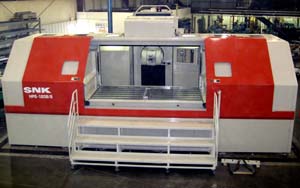An engineer at Washington University in St. Louis has helped find a way to “cut the chatter” in high-speed machining of aluminum and titanium aircraft parts.

Chatter in milling is an instability that arises because the cutting tool vibrates, making oscillating patterns on the work piece. The tool goes over the patterns, making the tool vibrate even more, yielding deeper patterns in the work piece, worsening until eventually the chatter destroys the tool or work piece.
Now researchers including Philip V. Bayly, Ph.D., Washington University Hughes Professor of Mechanical Engineering, and Washington University alumnus Jerry Halley, of Tech Manufacturing, Wright City, Missouri, have developed software that predicts when chatter is going to occur as well as the accuracy of the cut. The software is based on a technique called time finite element analysis (TFEA).
Avoiding chatter allows much faster machining, makes the tool last longer, and increases the quality of the parts. Lighter, stronger, and more accurate parts lead to faster, more durable, and more affordable aircraft.
“This analytical technique helps get accurate machining processes and can play a major role in businesses creating higher quality parts that are less costly to make,” said Bayly. “You can get a big pay off in stability and accuracy just by changing the speed at which the tools cut. That’s one of the key things that TFEA finds out.”
TFEA simulations are performed before the milling process, using a computer model of the machining system. The analysis predicts good and bad speeds for stability and accuracy of the cuts.
Bayly and several colleagues have applied for a patent on a concept that will take advantage of TFEA to design machining processes. The computations can be done so speedily that the hope is that the software will be used widely in advanced aerospace, automotive, and medical machine shops.